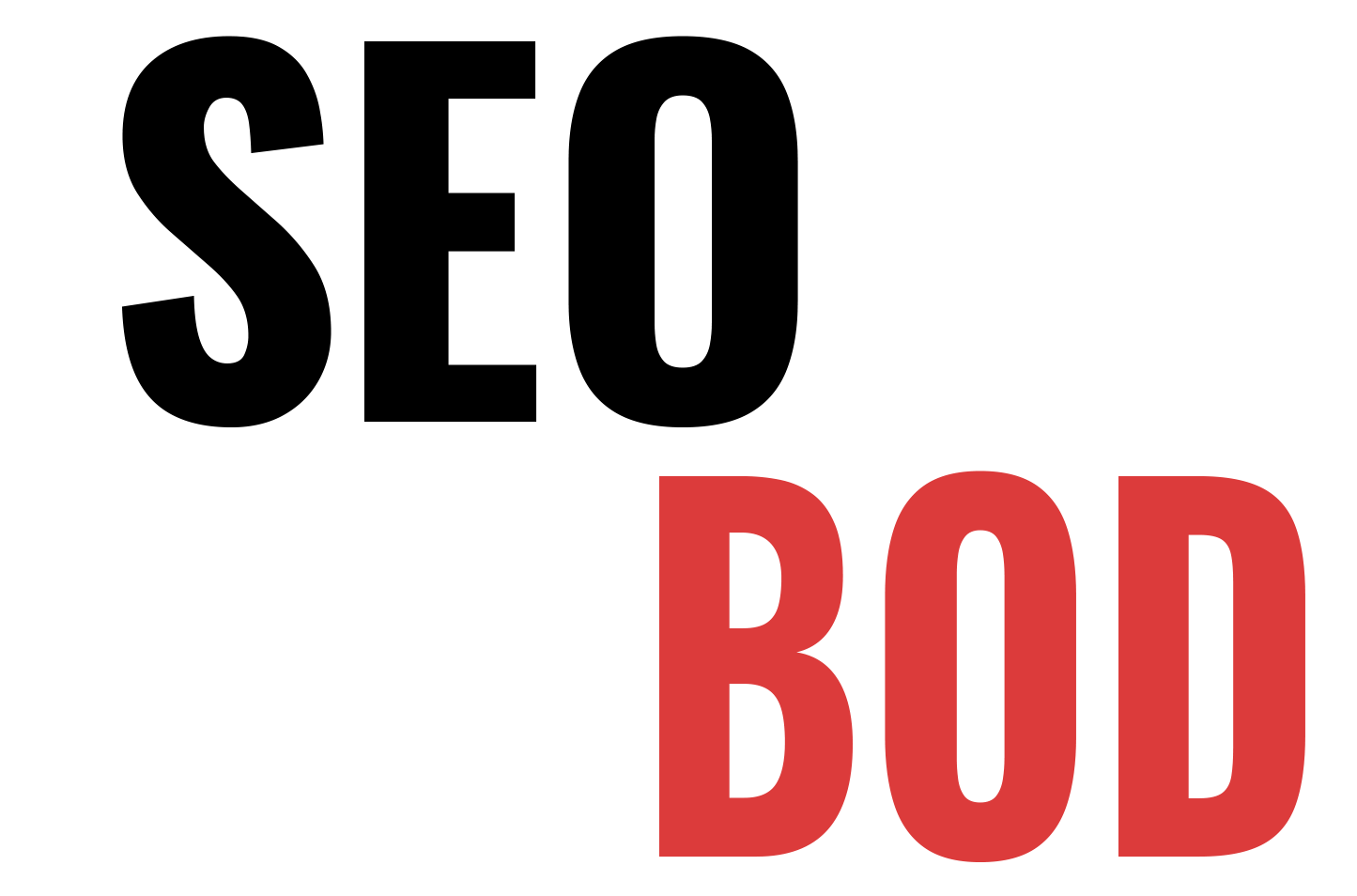Welcome to my blog where we will be discussing the various strategies to optimize your Amazon listings and improve your visibility, conversions, and overall success on the platform. In this blog post, we will cover key aspects such as keyword research, writing compelling product titles, optimizing product descriptions, crafting persuasive bullet points, utilizing high-quality product images, adding relevant backend search terms, optimizing product reviews and ratings, enhancing listings with videos, implementing effective pricing strategies, optimizing product variations, leveraging A+ content, and monitoring and analyzing Amazon listing metrics. So, let’s dive in and explore the best practices for Amazon listing optimization!
Keyword Research For Amazon Listings
When it comes to selling products on Amazon, keyword research plays a crucial role in ensuring better visibility and driving traffic to your listings. By identifying and using the right keywords, you can improve your chances of ranking higher in search results and attracting potential customers. Amazon optimization is all about understanding what keywords are relevant to your product and incorporating them strategically throughout your listing.
One of the first steps in conducting keyword research for Amazon listings is to brainstorm a list of potential keywords that are relevant to your product. Think about the words or phrases that customers might use when searching for a product like yours. Consider the features, benefits, and uses of your product to come up with a comprehensive list of keywords.
Next, you can use various keyword research tools to expand your list and gather data about search volume and competition for each keyword. Tools like Amazon’s Keyword Tool and Google Keyword Planner can provide valuable insights into which keywords are most popular and how competitive they are.
- Once you have a list of potential keywords, it’s important to strategically incorporate them into your product titles, descriptions, bullet points, and backend search terms. These are the areas of your listing where keywords have the most impact on search rankings.
| Product Titles: | Include your most important keywords in the product title to maximize visibility. However, make sure the title remains clear, concise, and compelling to entice users to click on your listing. |
|---|---|
| Product Descriptions: | Utilize relevant keywords in the product description to provide search engines with more context about your product. However, focus on creating informative and engaging descriptions that accurately describe your product’s features and benefits. |
| Bullet Points: | Craft persuasive bullet points that highlight the key features and benefits of your product. Incorporate keywords naturally within the bullet points while maintaining readability. |
| Backend Search Terms: | Add relevant keywords to the backend search terms section to improve your product’s visibility in search results. However, avoid using duplicate keywords and focus on including additional relevant terms that may not fit naturally within other sections of your listing. |
Remember, keyword research is an ongoing process. Monitor the performance of your listings and adjust your keyword strategy accordingly. Experiment with different keywords, titles, and descriptions to find the combination that works best for your products. By staying proactive and constantly optimizing your Amazon listings, you can increase your chances of reaching a wider audience and driving more sales.
Writing Compelling Product Titles For Better Visibility
When it comes to selling products on Amazon, one of the key factors that can make or break your success is the product title. A compelling and well-optimized product title can greatly enhance the visibility of your listing and attract more potential customers. In this article, we will explore the importance of writing compelling product titles and provide you with some tips on how to optimize them for better visibility on Amazon.
First and foremost, it is important to understand that Amazon uses a search algorithm to determine which products to display in response to a user’s search query. This means that keywords play a crucial role in determining the visibility of your listing. To optimize your product title, make sure to include relevant keywords that your target audience is likely to search for. However, avoid keyword stuffing, as this can make your title look spammy and may result in your listing being penalized by Amazon.
Another important aspect of writing compelling product titles is to make them clear, concise, and descriptive. Your product title should accurately convey what your product is and highlight its key features. Use strong and persuasive language to grab the attention of potential customers and entice them to click on your listing. Including important details such as brand name, size, color, and material in the title can also help potential customers quickly determine if your product meets their needs.
- Additionally, it is worth mentioning that Amazon allows you to use certain HTML tags in your product title. Utilizing these tags can help make your title stand out and appear more visually appealing. For example, you can use the tag to make certain keywords or phrases in your title bold and impactful. This can help draw the attention of potential customers and increase the likelihood of them clicking on your listing.
- In summary, writing compelling product titles for better visibility on Amazon requires a strategic approach. By incorporating relevant keywords, being clear and descriptive, and utilizing HTML tags to enhance visual appeal, you can optimize your product titles and increase the visibility of your listings. Remember, the product title is often the first thing potential customers see, so make it count!
| Benefits of Writing Compelling Product Titles | Steps to Optimize Product Titles |
|---|---|
| 1. Increased visibility on Amazon | 1. Research and identify relevant keywords |
| 2. Attract more potential customers | 2. Incorporate keywords naturally into the title |
| 3. Improve click-through rates | 3. Make the title clear, concise, and descriptive |
| 4. Enhance overall sales and conversions | 4. Utilize HTML tags for visual appeal |
Optimizing Product Descriptions With Relevant Keywords
When it comes to selling products on Amazon, optimizing product descriptions with relevant keywords is crucial for increasing visibility and driving sales. Product descriptions play a significant role in attracting potential customers and convincing them to make a purchase. By incorporating the right keywords into your product descriptions, you can improve your Amazon search rankings and attract more organic traffic to your listings.
One of the first steps in optimizing product descriptions is conducting thorough keyword research. This involves identifying the most relevant and high-traffic keywords that potential customers are likely to use when searching for products similar to yours on Amazon. Tools such as Amazon’s own keyword research tool and third-party keyword research tools can help you identify these keywords.
Once you have identified the relevant keywords, it’s important to strategically place them throughout your product descriptions. However, it’s essential to strike a balance between optimizing for keywords and keeping your descriptions natural and informative. Stuffing your descriptions with keywords can make them sound spammy and turn off potential customers.
- Incorporating relevant keywords in the title of your product description is essential for improving visibility on Amazon. The title is one of the most prominent elements that potential customers see when browsing through search results. Including strong and relevant keywords in the title can help your product stand out and rank higher in search results.
| Benefits of Optimizing Product Descriptions with Keywords: |
|---|
| Increased visibility: Including relevant keywords in your product descriptions can help your listings appear higher in Amazon search results, improving visibility among potential customers. |
| Improved click-through rates: When your product descriptions incorporate the right keywords, potential customers are more likely to click on your listings, increasing the chances of making a sale. |
| Enhanced conversion rates: By providing accurate and relevant information through optimized product descriptions, you can increase the likelihood of customers converting and making a purchase. |
| Better understanding of customer needs: Analyzing the keywords used by potential customers can provide valuable insights into their preferences and needs, allowing you to tailor your product descriptions and offerings accordingly. |
| Competitive advantage: Optimizing your product descriptions with relevant keywords can help you outperform competitors who may not be using effective keyword strategies. |
In conclusion, optimizing your product descriptions with relevant keywords is a crucial step in improving visibility, attracting potential customers, and driving sales on Amazon. By conducting thorough keyword research and strategically incorporating keywords into your product descriptions, you can enhance your chances of ranking higher in search results and increasing conversions. Remember to strike a balance between optimization and natural, informative descriptions to provide the best experience for both search engines and potential customers.
Crafting Persuasive Bullet Points To Highlight Key Features
When it comes to selling products on Amazon, having compelling bullet points is essential for capturing the attention of potential customers. Bullet points provide concise and easily digestible information about the key features and benefits of a product. By optimizing your bullet points with relevant keywords, you can improve the visibility of your product listings and increase your chances of making a sale.
One of the first steps in crafting persuasive bullet points is conducting thorough keyword research. By understanding the search terms that customers are using to find products similar to yours, you can strategically incorporate these keywords into your bullet points. This will not only improve your product’s visibility in search results, but also ensure that your bullet points are relevant to what customers are looking for.
In addition to keyword optimization, it is important to highlight the unique selling points and key features of your product in the bullet points. Use strong and attention-grabbing words to emphasize the benefits that customers will gain by purchasing your product. For example, if you are selling a fitness tracker, instead of simply stating “tracks steps,” you could say “revolutionary fitness tracker that accurately tracks steps, calories burned, and distance covered.”
| Bullet Point Example |
|---|
|
By utilizing bullet points, you can effectively communicate the key features and benefits of your product in a quick and concise manner. These bullet points act as visual cues for busy shoppers, allowing them to quickly scan and understand the value your product offers. Remember to optimize your bullet points with relevant keywords and highlight the unique selling points of your product to capture the attention of potential customers and increase conversions on your Amazon listings.
Utilizing High-Quality Product Images For Enhanced Conversions
When it comes to selling products on Amazon, visual appeal plays a crucial role in driving conversions. With millions of products vying for attention, having high-quality product images can make all the difference in capturing the interest of potential buyers. In this blog post, we will explore the importance of utilizing high-quality product images for enhanced conversions on Amazon.
First and foremost, it is essential to understand that Amazon is a highly visual platform. Shoppers rely heavily on product images to evaluate the quality, features, and overall appeal of a product. Therefore, investing in professional product photography is a must. By using Amazon optimization techniques such as capturing multiple angles, zoom-in shots, and lifestyle images, sellers can provide potential buyers with a comprehensive understanding of the product.
In addition to quality, the relevance of the product images is also crucial. Optimizing product images with relevant keywords can significantly improve visibility and search rankings. By incorporating Amazon optimization techniques such as keyword-rich image titles and alt text, sellers can ensure their products appear in relevant search results, driving targeted traffic to their listings.
Another important aspect of utilizing high-quality product images is the ability to showcase key features and benefits effectively. Crafting compelling images that highlight the product’s unique selling points can capture the attention of potential buyers and ultimately drive conversions. For example, if you’re selling a camera, including images that demonstrate its low-light capabilities or image stabilization technology can greatly enhance its perceived value.
- In summary, high-quality product images play a crucial role in driving conversions on Amazon. By following Amazon optimization techniques such as investing in professional photography, incorporating relevant keywords, and showcasing key features, sellers can enhance their product listings and capture the interest of potential buyers. Remember, on a visually-driven platform like Amazon, a picture is worth a thousand words, so make sure your product images are compelling and irresistible!
| Benefits of Utilizing High-Quality Images |
|---|
| 1. Improved visibility and search rankings |
| 2. Increased click-through rates |
| 3. Enhanced trust and credibility |
| 4. Higher conversion rates |
Adding Relevant Backend Search Terms For Seo Optimization
Adding Relevant Backend Search Terms For SEO Optimization
When it comes to selling products on Amazon, optimizing your listing is key to driving traffic and increasing conversions. One strategy that many sellers overlook is the use of backend search terms. Backend search terms are keywords that are not visible to customers, but are crucial for search engine optimization (SEO) on the Amazon platform. By strategically incorporating these search terms into your listing, you can improve your visibility and ultimately boost sales.
Amazon is a highly competitive marketplace, and getting your products to rank well in search results is essential for success. One way to do this is by utilizing relevant backend search terms. These terms should be directly related to your product and its features. For example, if you are selling a fitness tracker, some relevant backend search terms could include “fitness monitor,” “activity tracker,” and “heart rate monitor.”
It’s important to note that while backend search terms are not visible to customers, they are still indexed by Amazon’s search algorithm. This means that including highly relevant keywords in your backend search terms can help your product appear in more search results. However, it’s crucial to avoid keyword stuffing or using unrelated terms, as this can harm your listing’s visibility and credibility.
- Using bullet points in your product description is another effective way to optimize your backend search terms. By listing key features and benefits in bullet point format, you can include additional relevant keywords without sacrificing readability. For example, if you are selling a blender, some bullet points could include “powerful motor for smooth blending,” “easy-to-clean design,” and “versatile functions for a variety of recipes.”
- In addition to utilizing backend search terms, it’s also important to optimize other elements of your listing for SEO. This includes your product title, bullet points, and product description. By including relevant keywords in these sections, you can improve your chances of appearing in relevant search results. For example, if you are selling a coffee maker, make sure to include keywords such as “programmable,” “brew strength options,” and “automatic shut-off” in your product title and description.
- Finally, monitoring and analyzing your Amazon listing metrics is crucial for continuous improvement. By regularly reviewing data such as click-through rates, conversion rates, and sales performance, you can identify areas for optimization and make data-driven decisions. For example, if you notice that your click-through rates are low, you may need to revise your backend search terms or improve your product images to make them more compelling.
| Keyword | Description |
|---|---|
| Amazon | An e-commerce platform that allows individuals and businesses to sell products online. |
| Optimization | The process of making changes to improve the performance or effectiveness of something, in this case, an Amazon product listing. |
In conclusion, adding relevant backend search terms for SEO optimization is a crucial step in improving the visibility and success of your Amazon products. By strategically incorporating these keywords into your listing, utilizing bullet points and optimizing other elements, you can increase your chances of appearing in relevant search results and ultimately drive more sales. Additionally, by continuously monitoring and analyzing your listing metrics, you can make data-driven decisions to further optimize your product listings. Start optimizing your backend search terms today and see the positive impact it can have on your Amazon business.
Optimizing Product Reviews And Ratings For Increased Trust
Product reviews and ratings play a crucial role in building trust and credibility for your products on Amazon. Positive reviews not only influence potential customers to purchase your product but also improve your product’s visibility in search results. Therefore, optimizing product reviews and ratings is essential for increased trust and better conversion rates. In this blog post, we will explore effective strategies to optimize reviews and ratings on Amazon.
One of the key ways to optimize product reviews is by encouraging customers to leave feedback. You can do this by sending follow-up emails to buyers and kindly requesting them to share their experience with the product. Make sure to provide clear instructions on how to leave a review and emphasize the importance of their feedback in helping other buyers make informed decisions.
Another strategy is to address negative reviews promptly and professionally. Negative reviews can be detrimental to your product’s reputation, but how you handle them can make all the difference. Respond to negative reviews acknowledging the customer’s concerns and offering a solution or explanation. This shows potential customers that you value their satisfaction and are committed to resolving any issues that may arise.
- Additionally, consider using product inserts or packaging to request reviews. Include a note or card with each purchase asking customers to leave a review, and provide them with a direct link to the review page. This makes it easier for buyers to leave feedback, increasing the likelihood of receiving reviews.
| Keyword | Optimization |
|---|---|
| product reviews | Optimizing product reviews can help increase the trust and credibility of your Amazon listings. |
| ratings | Encouraging customers to provide ratings for your products enhances customer confidence. |
| trust | By optimizing reviews and ratings, you can build increased trust with potential customers. |
In conclusion, optimizing product reviews and ratings is essential for establishing trust and credibility on the Amazon platform. By encouraging customers to leave feedback, promptly addressing negative reviews, and utilizing product inserts, you can enhance the overall perception of your products. Remember, positive reviews not only influence potential customers but also improve your product’s visibility in search results. By implementing these strategies, you can boost trust, increase conversions, and ultimately drive sales for your Amazon listings.
Enhancing Product Listing With Informative And Engaging Videos
Videos have become a powerful tool for marketing and promoting products on Amazon. By incorporating informative and engaging videos into your product listing, you can significantly enhance its visibility, customer engagement, and overall conversion rates. In this blog post, we will explore the various ways you can optimize your Amazon product listing by leveraging the power of videos.
1. Showcasing Product Features and Benefits
One of the key advantages of using videos in your product listing is the ability to showcase your product’s features and benefits in a more dynamic and visually appealing manner. Instead of relying solely on static images and text, videos allow you to provide a comprehensive overview of your product, highlighting its unique selling points and demonstrating how it can solve the customer’s problem.
2. Demonstrating Product Usage and Functionality
Another way to enhance your product listing with videos is by demonstrating how to use the product and showcasing its functionality. By visually guiding the potential customers through the product’s usage, you can eliminate any doubts or confusion they may have and provide a clear understanding of the product’s capabilities.
3. Building Trust and Establishing Authority
Videos have the power to build trust and establish your brand’s authority within the industry. By featuring satisfied customers, testimonials, or industry experts in your videos, you can effectively communicate the value and reliability of your product. This not only fosters trust among potential customers but also sets you apart from competitors and positions you as a reputable seller on Amazon.
In conclusion, incorporating informative and engaging videos into your product listing on Amazon can significantly enhance its visibility, customer engagement, and overall conversion rates. By showcasing product features and benefits, demonstrating usage and functionality, and building trust and authority, you can create a compelling and persuasive product listing that will capture the attention of potential customers and drive higher sales on the platform.
Implementing Effective Pricing Strategies For Competitive Advantage
Pricing is a critical aspect of any business strategy, and when it comes to selling products on Amazon, it becomes even more crucial. The right pricing strategy can give you a competitive advantage in the online marketplace, attracting more customers and maximizing your profits. In this blog post, we will explore various effective pricing strategies that you can implement to gain an edge over your competitors on Amazon.
1. Dynamic Pricing:
Dynamic pricing is a strategy that involves adjusting product prices in real-time based on market demand, competitor prices, and other factors. By utilizing dynamic pricing tools and software, you can automatically optimize your prices to ensure that you are offering the most competitive rates. This strategy allows you to stay ahead of the market trends and adjust your prices accordingly to maximize your sales and profitability.
2. Price Bundling:
Price bundling is a strategy where you combine multiple products together and offer them at a discounted price. This strategy not only promotes upselling but also provides customers with added value, making your offering more attractive compared to individual purchases. By bundling products strategically, you can incentivize customers to buy more while increasing your average order value.
3. Promotional Pricing:
Creating timely promotions and discounts can drive sales and attract new customers. Promotional pricing involves offering discounted prices for a limited time or during specific events such as holidays or Amazon’s Prime Day. By leveraging these promotional opportunities, you can create a sense of urgency and encourage buyers to make a purchase while the offer lasts. This strategy can help you boost sales and gain a competitive advantage by attracting price-sensitive customers.
Implementing effective pricing strategies is not a one-size-fits-all approach. It requires careful analysis, experimentation, and monitoring of your Amazon listing metrics. By constantly analyzing the market, understanding your competitors, and adjusting your pricing strategies accordingly, you can stay ahead of the competition and ensure maximum profitability for your Amazon business.
| Pricing Strategy | Advantages | Disadvantages |
|---|---|---|
| Dynamic Pricing | React to market changes in real-time, maximize profits | Increase complexity, need for advanced pricing tools |
| Price Bundling | Increase average order value, promote upselling | Requires careful product selection and bundling strategy |
| Promotional Pricing | Create a sense of urgency, attract price-sensitive customers | Potential short-term profit reduction |
Ultimately, implementing effective pricing strategies on Amazon requires finding the right balance between competitiveness and profitability. Regularly monitoring and analyzing your product pricing, customer behavior, and competitor activity can help you refine and optimize your pricing strategies for long-term success. Remember, pricing is a dynamic aspect of your business that requires constant attention and adaptation.
Optimizing Product Variations To Cater To Different Customer Preferences
When it comes to selling products on Amazon, one of the key strategies for success is optimizing product variations to cater to different customer preferences. By offering a range of options to choose from, sellers can effectively target a broader audience and maximize their sales potential. In this blog post, we will explore the importance of optimizing product variations and provide practical tips to help sellers improve their listings.
One of the first steps in optimizing product variations on Amazon is conducting thorough keyword research. By identifying relevant keywords that are frequently searched by potential customers, sellers can better understand what variations to offer. Using tools like Amazon’s Keyword Tool or third-party software can provide valuable insights into popular search terms and help sellers tailor their product offerings accordingly.
Another important aspect of optimizing product variations is writing compelling product titles that accurately describe the different options available. By including relevant keywords in the titles, sellers can improve the visibility of their listings and attract more potential buyers. For example, using “Amazon optimization” as a keyword, a seller offering different colors of a specific product could create titles like “Product X – Blue Option” or “Product X – Red Option.”
Furthermore, sellers should craft persuasive bullet points to highlight the key features of each product variation. By clearly explaining the unique attributes and benefits of each option, sellers can help customers make informed purchasing decisions. Using concise and compelling language, sellers can showcase the value of each variation and entice customers to choose their product over competitors.
| Optimizing Product Variations | To Cater To Different Customer Preferences |
|---|---|
| 1. Conduct keyword research | 4. Craft persuasive bullet points |
| 2. Write compelling product titles | 5. Utilize high-quality product images |
| 3. Offer unique and attractive options | 6. Analyze Amazon listing metrics |
Additionally, utilizing high-quality product images is crucial in optimizing product variations. Customers rely heavily on visuals when making purchasing decisions online, so sellers should ensure that their images accurately represent each product option. Clear, well-lit, and professionally captured images can significantly enhance conversions and increase the chances of a customer choosing one variation over another.
Lastly, monitoring and analyzing Amazon listing metrics is essential for continuous improvement. By regularly reviewing data such as click-through rates, conversion rates, and customer feedback, sellers can identify trends and make data-driven decisions about which product variations are performing best. This allows sellers to further optimize their listings and cater to the specific preferences of their target customers.
In conclusion, optimizing product variations to cater to different customer preferences is a crucial aspect of succeeding on Amazon. By conducting keyword research, writing compelling product titles, crafting persuasive bullet points, utilizing high-quality product images, and continually analyzing listing metrics, sellers can enhance their listings and attract more potential buyers. By offering a range of options and tailoring their offerings to meet the needs and preferences of their target customers, sellers can increase their sales and maximize their success on the Amazon platform.
Leveraging A+ Content To Provide Comprehensive Product Information
Leveraging A+ Content to Provide Comprehensive Product Information
When it comes to selling products on Amazon, providing comprehensive information plays a crucial role in attracting and engaging potential customers. One effective way to accomplish this is by leveraging A+ Content. A+ Content, also known as Enhanced Brand Content (EBC), allows sellers to enhance their product listings using rich media such as images, videos, and text.
By incorporating A+ Content into your product listings, you can offer a more immersive and informative experience to shoppers, helping them make well-informed purchasing decisions. This not only increases customer satisfaction but also boosts conversion rates and overall sales.
Monitoring And Analyzing Amazon Listing Metrics For Continuous Improvement
When it comes to selling products on Amazon, monitoring and analyzing listing metrics is crucial for continuous improvement. By keeping a close eye on these metrics, sellers can identify areas for optimization and make data-driven decisions to enhance their product listings. In this blog post, we will explore the importance of monitoring and analyzing Amazon listing metrics and how it can lead to continuous improvement and success.
Amazon provides sellers with valuable metrics to track the performance of their product listings. These metrics include click-through rates (CTR), conversion rates, and customer reviews and ratings. By regularly monitoring these metrics, sellers can gain insights into how their products are performing and identify any areas that may require improvement.
One of the key metrics to focus on is the click-through rate. This metric measures the percentage of users who click on a listing after seeing it on Amazon’s search results page. By analyzing the CTR, sellers can determine whether their product titles, images, and overall listing content are compelling enough to attract potential customers. If the CTR is low, it may indicate that the listing needs optimization in terms of keywords or visual appeal.
| Click-through Rate (CTR) | Conversion Rate |
|---|---|
| The percentage of users who click on a listing after seeing it on Amazon’s search results page. | The percentage of users who make a purchase after visiting a product listing. |
The conversion rate is another important metric to monitor. It represents the percentage of users who make a purchase after visiting a product listing. A low conversion rate may indicate that the product description, bullet points, or pricing strategy need improvement. By analyzing the conversion rate, sellers can identify any obstacles or barriers that may be preventing customers from making a purchase.
Additionally, monitoring customer reviews and ratings is essential for maintaining trust and credibility on Amazon. Positive reviews and high ratings not only enhance the visibility of a product but also increase the likelihood of attracting new customers. Sellers should regularly analyze these metrics and address any negative feedback or issues raised by customers to continuously improve their product offering.
In conclusion, monitoring and analyzing Amazon listing metrics is a vital part of achieving continuous improvement and success as a seller. By tracking metrics such as click-through rates, conversion rates, and customer reviews, sellers can optimize their product listings for better visibility, increased conversions, and enhanced trust. It is through this data-driven approach that sellers can stay ahead of the competition and continuously improve their performance on Amazon.
Frequently Asked Questions




